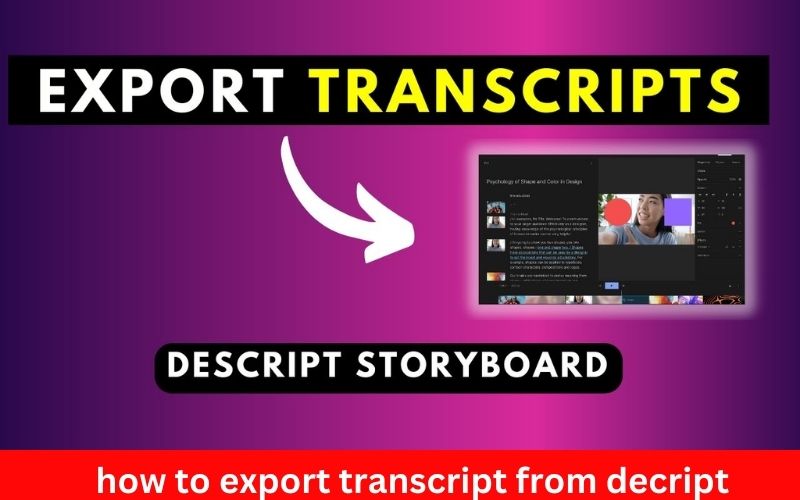How to export transcript from decript Decipher is a powerful tool for transcribing audio and video files. Once you’ve finished transcribing your content, you may want to export it for further use, sharing, or analysis. In this blog post, we’ll guide you through the process of exporting transcripts from Decipher.
Step-by-Step Guide to Exporting Transcripts
- Open Your Transcript:
- Log in to your Decipher account and navigate to the transcript you want to export.
- Select the Export Option:
- Look for the “Export” button or a similar option. It’s usually located near the top or bottom of the transcript page.
- Choose Your Export Format:
- Decipher typically offers several export formats. The most common options include:
- Plain Text (.txt): This is a simple format that preserves the text content of your transcript.
- Microsoft Word (.docx): This format allows you to edit and format your transcript in a word processor.
- Rich Text Format (.rtf): This format retains formatting information like bold, italics, and font styles.
- Subtitles (various formats): If you’re working with video, you can export your transcript as subtitles in formats like SRT, VTT, or XML.
- Other formats: Decipher may offer additional export options depending on its features.
- Decipher typically offers several export formats. The most common options include:
- Customize Export Settings (if available):
- Some export options may allow you to customize settings. For example, you might be able to specify the character encoding, line breaks, or subtitle timing.
- Start the Export:
- Once you’ve selected your desired format and customized any settings, click the “Export” button to begin the process.
- Save Your Transcript:
- Decipher will typically download the exported transcript as a file to your computer. Choose a location to save it and provide a suitable filename.
Additional Tips and Considerations
- Check for Export History: Decipher might keep a record of your previous exports. This can be helpful if you need to access an older version of a transcript.
- Export Large Transcripts in Chunks: If you’re dealing with very large transcripts, consider exporting them in smaller chunks to avoid potential issues.
- Consider Third-Party Tools: In some cases, you might find it more convenient to use a third-party tool to export or convert your Decipher transcripts.
- Review Export Quality: Before sharing or using your exported transcript, review it to ensure that the formatting and content are as expected.
Utilize Decipher’s Search and Filter Functions:
- Narrow Down Your Export: If you only need to export a specific section of your transcript, use Decipher’s search and filter functions to isolate the relevant parts before exporting. This can save time and reduce file size.
- Create Custom Tags: For large projects, consider creating custom tags within Decipher to categorize different sections of your transcript. This can make it easier to export specific portions based on their tags.
Export for Time-Coded Subtitles:
- Ensure Accuracy: If you’re exporting for time-coded subtitles, double-check the accuracy of the timestamps in Decipher. Incorrect timestamps can lead to synchronization issues when using the subtitles with your video.
- Consider Subtitle Formats: Decipher may support multiple subtitle formats. Choose the format that best suits your video editing software or player.
Use Decipher’s API for Automation:
- Integrate with Other Tools: For advanced users or developers, how to export transcript from decript often provides an API that allows you to automate the export process. This can be useful for integrating Decipher into larger workflows or for exporting transcripts in bulk.
Export for Translation:
- Maintain Formatting: If you plan to translate your transcript, it’s important to maintain the original formatting and structure. This will help translators understand the context and ensure accurate translations.
- Consider Translation Tools: Decipher may offer integration with translation tools or services. This can streamline the translation process and provide additional features like machine translation.
Back Up Your Transcripts:
- Prevent Data Loss: Always back up your exported transcripts to prevent accidental data loss. Consider using cloud storage or external hard drives to ensure your transcripts are safe.
Conclusion
Exporting how to export transcript from decript is a straightforward process that allows you to share, analyze, or further utilize your transcribed content. By following the steps outlined in this guide, you can easily extract your transcripts in the desired format and take advantage of their value. Remember to explore the available export options and customize settings as needed to meet your specific requirements.




